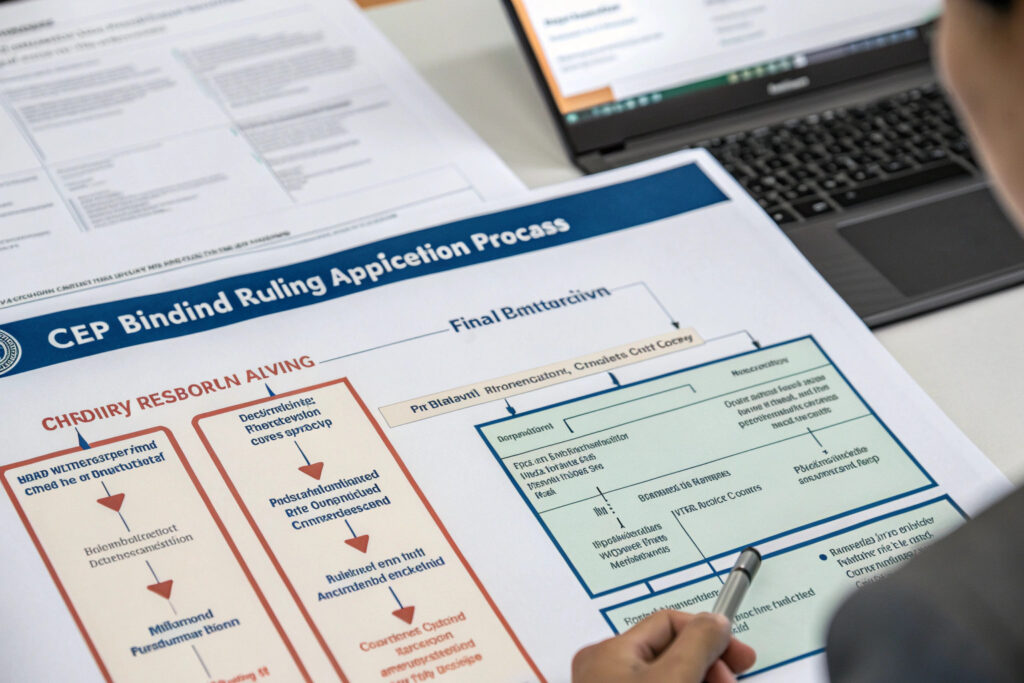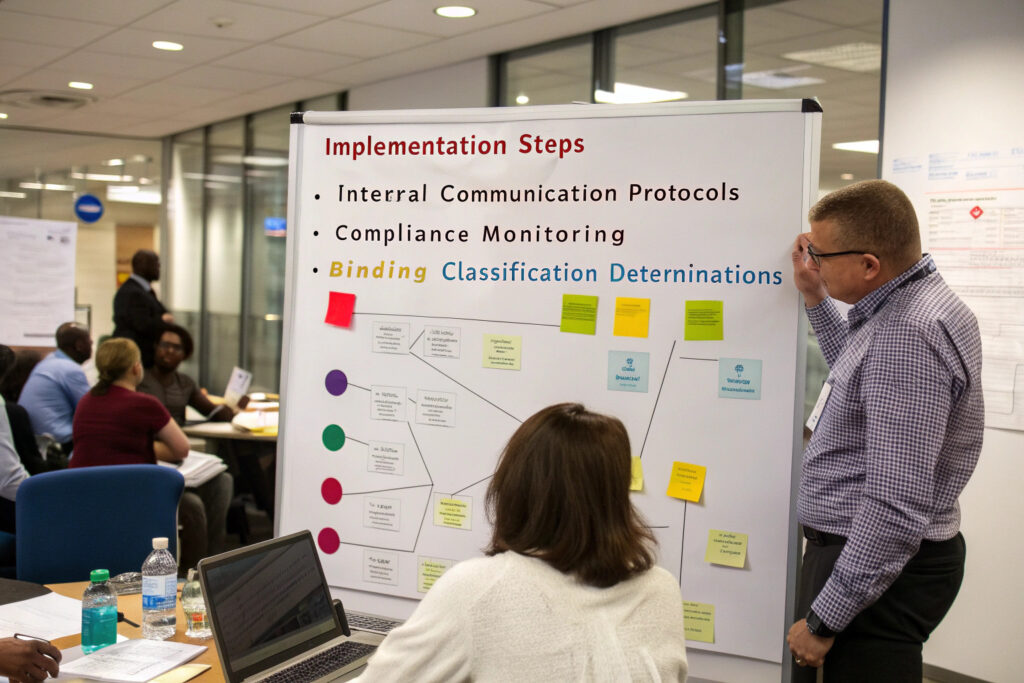Navigating the complex landscape of Harmonized Tariff Schedule (HTS) codes for innovative mask designs presents significant challenges for importers and manufacturers. Novel mask designs incorporating unique materials, advanced technologies, or multifunctional features often don't fit neatly into established classifications, creating uncertainty around duty rates, regulatory requirements, and compliance obligations. Understanding how to obtain binding rulings provides critical certainty for business planning and market entry strategies.
To access HTS code binding rulings for novel mask designs, you must submit detailed ruling requests to U.S. Customs and Border Protection (CBP) that comprehensively document your product's unique characteristics, materials, construction, and intended use, following specific procedural requirements outlined in 19 CFR Part 177. These legally binding determinations provide classification certainty for three years and protect against future classification disputes for identical products.
The binding ruling process transforms subjective classification decisions into official government determinations that provide import compliance security. For novel mask designs that straddle multiple categories—such as masks with integrated electronics, therapeutic claims, or unconventional materials—this process is particularly valuable for avoiding costly reclassification issues. Let's examine the specific steps and documentation required to successfully obtain these crucial determinations.
What Preparation Is Required Before Submitting a Ruling Request?
Thorough preparation significantly increases the likelihood of receiving a favorable and accurate binding ruling for innovative mask designs.

What technical documentation is essential?
Complete product specifications must include detailed descriptions of all materials (with percentages by weight), construction methods, dimensions, and any special features. For novel masks, this should include high-resolution photographs from multiple angles, technical drawings showing construction details, and samples when possible. Our most successful applications include cross-sectional diagrams illustrating layer structures and material interfaces that might affect classification.
How should you document novel features?
Precise descriptions of innovative elements that differentiate your mask from standard products are crucial. This includes technical specifications for integrated electronics, detailed explanations of therapeutic claims, documentation of unique filtration mechanisms, or evidence of specialized protective capabilities. For masks with novel materials like graphene-enhanced fabrics or phase-change materials, we include laboratory analysis and material safety data sheets.
What Is the Step-by-Step Process for Obtaining Binding Rulings?
Following the proper procedural pathway ensures CBP can process your request efficiently and completely.

How do you initiate the ruling process?
Submit a formal ruling request to the National Commodity Specialist Division (NCSD) following the guidelines in 19 CFR Part 177. The request must include specific information: importer/manufacturer details, complete product description, intended use, suggested classification with rationale, and any previous rulings you believe are relevant. Our standard submission package includes a cover letter, technical specifications, photographs, and samples when permitted.
What about electronic submission through the Ruling Processing System?
The eRulings platform provides a streamlined electronic submission process that typically yields faster responses than paper submissions. The system guides you through required information fields and document uploads, ensuring completeness before submission. Our experience shows electronic submissions receive initial acknowledgment within 3-5 business days versus 7-10 days for paper submissions.
What Specific Challenges Apply to Novel Mask Designs?
Innovative mask features create unique classification challenges that require strategic approach in ruling requests.

How do integrated electronics affect classification?
Masks with electronic components like fans, sensors, or communication devices may be classified as machinery or electrical equipment rather than textiles. The ruling request must clearly explain whether these components represent the product's essential character or are ancillary features. Our successful approach emphasizes the primary function and composition when electronics serve supplementary purposes.
What about masks with therapeutic claims?
Products making medical or therapeutic claims may be classified as medical devices rather than textile articles, significantly impacting duty rates and FDA regulations. The ruling request should carefully distinguish between general wellness claims and specific medical assertions. Our documentation strategy focuses on precise marketing language and intended use statements to guide proper classification.
What Strategies Strengthen Your Ruling Request?
Certain approaches increase the likelihood of receiving favorable and definitive binding rulings.

How can you use existing rulings to support your request?
Research comparable binding rulings for similar products to build persuasive arguments for your suggested classification. While novel designs may not have exact precedents, identifying analogous products and their classifications demonstrates reasonable interpretation of tariff provisions. Our research process includes reviewing rulings across multiple product categories that share relevant characteristics with novel mask designs.
What technical evidence is most persuasive?
Independent laboratory testing and technical expert statements can provide objective evidence supporting your classification position. For masks with specialized filtration or protective properties, test reports demonstrating performance characteristics can influence whether products are classified as protective equipment versus simple textile accessories. Our submissions include third-party test data from accredited laboratories.
What Are the Timelines and Response Expectations?
Understanding the ruling process timeline helps manage business planning and product launch schedules.

How long does the ruling process typically take?
Standard ruling requests generally receive determinations within 30-90 days, though complex novel designs may require 90-120 days for thorough analysis. The complexity of your mask design, completeness of documentation, and current CBP workload all impact timing. Our tracking shows that complete, well-documented applications average 45-60 day response times.
What responses might you receive from CBP?
Binding classification decisions provide specific HTS codes and detailed explanations of the determination. Alternatively, CBP may request additional information, suggest modifications to your proposed classification, or indicate that your product requires review by other agencies (like FDA for medical devices). Our follow-up process includes prepared responses to common information requests to minimize delays.
How Should You Manage and Implement Received Rulings?
Once obtained, binding rulings require specific management to maintain their validity and compliance value.

What internal processes ensure ruling compliance?
Distribution to all relevant personnel including import, purchasing, and accounting staff ensures consistent application of the binding ruling. Implementation should include updates to product master data, internal classification databases, and purchasing documentation. Our compliance system automatically flags shipments that don't match ruling specifications to prevent inadvertent violations.
How long do binding rulings remain valid?
Binding rulings typically remain valid for three years from issue date unless revoked by CBP, though they continue to protect transactions that occurred during the validity period. Significant product modifications may require new rulings. Our tracking system alerts us 120 days before ruling expiration to begin the renewal process if needed.
Conclusion
Accessing HTS code binding rulings for novel mask designs requires meticulous preparation, comprehensive documentation, and strategic submission following established CBP procedures. The process provides crucial classification certainty for innovative products that don't fit traditional categories, protecting against future compliance issues and enabling accurate cost calculations. While the ruling process demands significant effort, the protection and certainty it provides are invaluable for businesses investing in novel mask technologies.
The most successful approaches treat binding rulings as strategic business assets rather than regulatory obligations, leveraging the certainty they provide for confident market expansion and product development. For novel mask designs facing classification ambiguity, the investment in obtaining binding rulings typically returns significant value through avoided compliance issues and streamlined customs clearance.
Ready to navigate the binding ruling process for your novel mask designs? Contact our Business Director, Elaine, at elaine@fumaoclothing.com to discuss our classification expertise and how we can help secure binding rulings that protect your innovative products. We'll provide guidance on the specific documentation and strategies needed for your unique mask features and technologies.


























